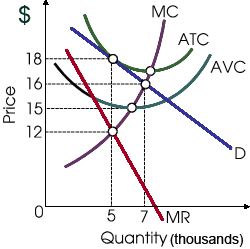When price discrimination is not possible this profit-maximizing monopolistic competitor charges a price of $______ as well as produces ___________ units of output: (w) $12 || 5 thousand. (x) $15 || 8 thousand. (y) $16 || 7 thousand. (z) $18 || 5 thousand.

Can anybody suggest me the proper explanation for given problem regarding Economics generally?